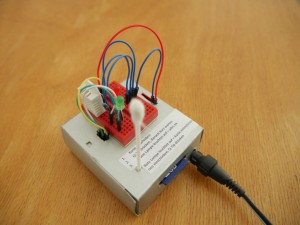
The critical questions – which I really appreciated – made me switch the order of this guide: instead of starting with the main parts, the arduino and the data logger shield, I start with the very heart of the logger: the sensor.
The sensor is the part that decides how good or bad the logger is suited for its purpose. No matter how careful you are building your project, if the sensor is bad, the results will not be satisfying. On the other hand, good sensors have their price. Like often it’s up to you to weigh the pro’s and con’s and decide how good your sensor has to be for your purpose. What helped me a lot were the tests conducted by Robert Smith with the most used sensors in the hobbyist sector, the DHT11, DHT22 and SHT71: http://www.kandrsmith.org/RJS/Misc/Hygrometers/calib_dht22_dht11_sht71.html. This comparison, together with his previous analysis of six DHT22 sensors made me use the DHT22/AM2302 which measures temperature and relative humidity for my projects.

Sensors are generally not built for eternity. That’s why you have to send in the professional loggers for calibration. Fortunately, there is a method for testing loggers for accuracy by using saturated salt solutions described by Samantha Alderson and Rachael Perkins on the website of Connecting to Collections Care: http://www.connectingtocollections.org/wp-content/uploads/2012/03/Calibration-using-saturated-salt-solutions.pdf
That’s what you should do with your homebrew loggers, too. You can even built a little testing device so you only have to expose the sensors to the test, not the whole logger.
Before you let your logger log the first time you should check it against a reliable professional device. In two occasions I found linear differences between my own logger and the other device (for example one was always 1% below the reference device), which I could correct in the software. Then it’s important like I already mentioned to check your sensor regularly. If the sensor is not reliable anymore you should replace it. That’s where the price of about 9 USD comes in handy.
So much for the sensor. The next part will be about the arduino and the logger shield.
Angela Kipp
Read the other posts for this project:
- Build Your Own Data Logger – Investigating Your Climate Graphs
- Build Your Own Data Logger – We Want Fahrenheit!
- Build Your Own Data Logger – Processing Data With Microsoft Excel
- Build Your Own Data Logger – Processing Data with OpenOffice Calc
- Build Your Own Data Logger – The Software, Telling the Logger to Log
- Build Your Own Data Logger – Arduino, the Datalogger-Shield and the Wiring
- Build Your Own Data Logger – The Sensor, Heart of the Logger
- Build Your Own Data Logger – Quick Start Guide
This post is also available in Russian translated by Helena Tomashevskaya.